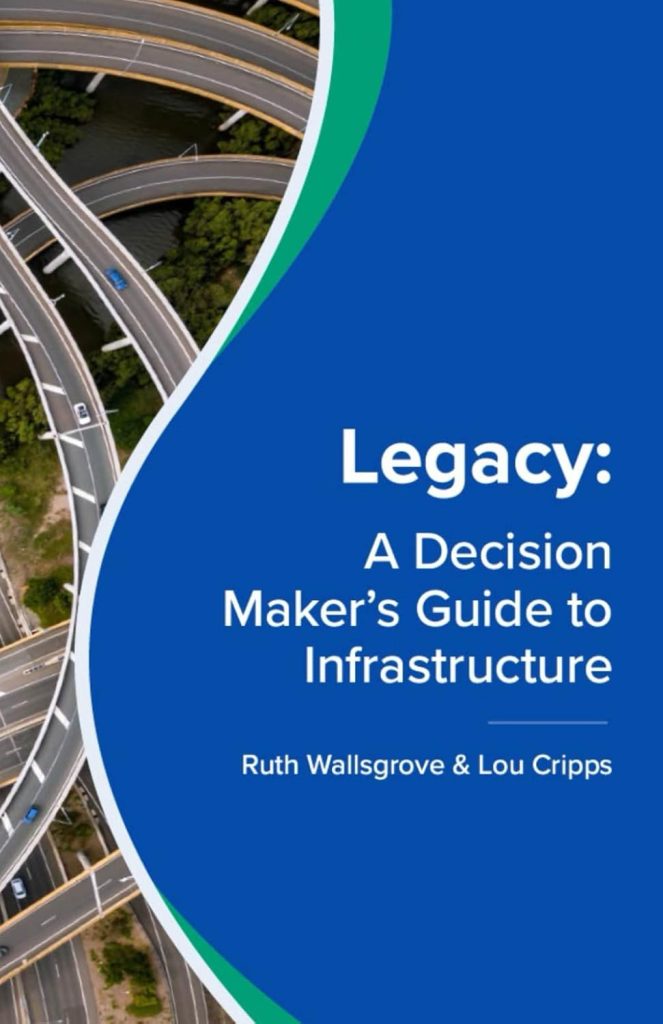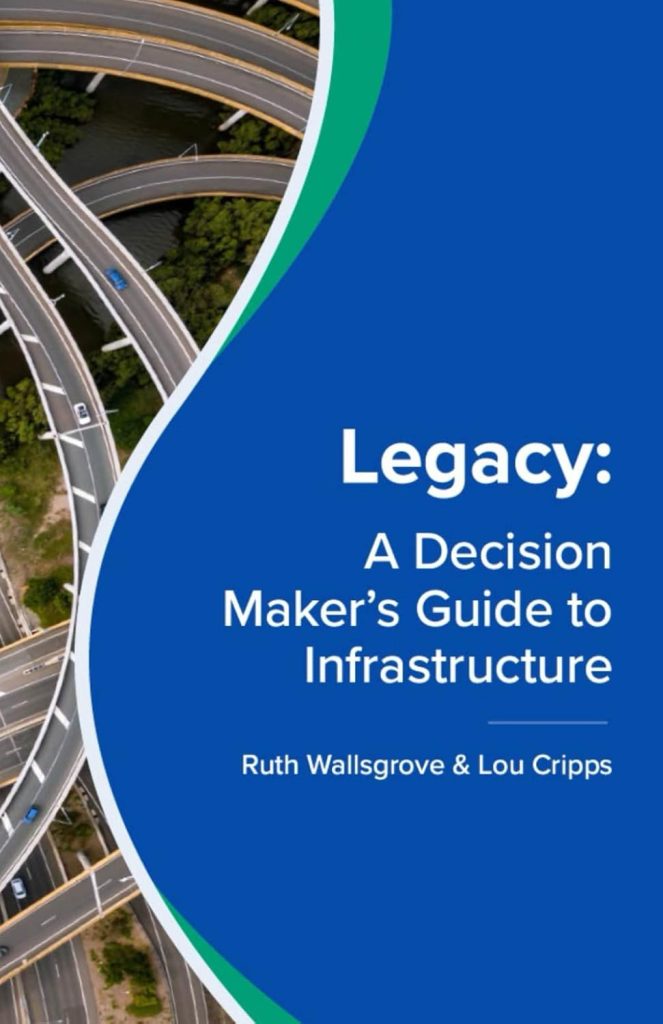
ID 26212151 | Child In Shallow © Pavla Zakova | Dreamstime.com
When we look back at the history of Asset Management, there is one curious feature.
In a world in which many people go on about data, many act like the revolution of AM is the discovery of asset data.
Why?
Penny many years ago made the point – well, that the point is making better long-term decisions about assets. Wave 1, ‘asset inventory’, only has any value when we use such data to make better decisions, in Penny’s Wave 2: strategic asset management. As Penny says, when you focus on the decisions, you have a much clearer idea of what data you actually need. Wave 2 improves Wave 1.
But there must be some kind of reason why organisations seem to have to go through Wave 1, collecting and organising data, first.
Cynically, we might think it’s because it’s easier than questioning decision-making: something middle level asset managers can do without challenging business at the top level. Or, and/or, there are plenty of suppliers willing to sell you help in collecting data or implementing the transactional IT systems to put it in. Few that actually know how to make better decisions.
But I come to suspect that, weirdly, asset-centric data is more radical than it sounds. What suggests this is how hard other teams kick and scream about collecting and handing on asset inventory, the very basic data on what assets we have where. (Capital projects, IT, even some maintenance teams.)
It doesn’t seem to help to stress that we cannot manage what we don’t know we have. Is the problem that they don’t understand that we do have to continue to manage assets into the future?
Or is it – back to basics – that the whole concept of an asset is the first revolution?
Other people manage projects, budgets, sites, even value on the balance sheet. Only Asset Management believes the fundamental unit of management is the operational asset.
Can we rewrite the advice on implementing Asset Management to get us to decisions faster?
Are too many organisations still not making that very first leap into the water?

Memorial to Jules Verne, Amiens, ID 381624172 © Linda Williams | Dreamstime.com
One way to put my life in context is: when I was born, Robert Heinlein was king of science fiction.
Not that I knew this until ten or so years later, when I started to read my family’s collection of sci fi Penguins. We, naturally, also favoured British writers, who, if not noticeably more female or non-white, were at least less American gung-ho.
Now, the world of the future is very different, with some ‘non-binary’ writers, Afrofuturism, and radical ecologies. And good aliens, my favourite.
Between then and now, there have been a lot of post-apocalyptic dystopias, which I tend to keep away from. Post-scarcity anarchism is much more my thing (see Ursula K LeGuin, and Iain M Banks’ ‘Culture’, for example).
And hope.
If one defining feature of good Asset Management is developing longer term planning, and infrastructure urgently requires a future vision, can hopeful science fiction help us?
What’s your most inspiring example of a fictional future?
And a vision of future infrastructure?

Just after Penny Burns and Jeff Roorda wrote about the revolutions or ‘waves’ of Asset Management in 2018, I realised how useful this was for surviving Asset Management conferences.
Sitting through yet another presentation about asset data, I thought: too many of us are still stuck in wave 1, asset inventory. Oh, for more papers on wave 2 and actually using information for making better strategic asset decisions! It’s not just my problem!
I had the great pleasure of attending a conference this month when not only did I not sit through anything on data, BIM, digital twins or AI, but we actually looked forward to waves 3 and 4.
The IAM UK conference, curated by Ursula Bryan – I really have to give her the credit – including an AM professional talking about how to use AM to solve Cape Town’s infrastructure challenge. That is truly wave 3 looking up and out. And another presentation about using AM to redefine coasts: a vision of wave 4.
At the conference I only addressed wave 2 with my US AM mob, about how most organisations still have to implement lifecycle based longer term planning.
But it was fantastically heartening to put this in the context of more ambitious Asset Management. Shout-outs to Johannes Paradza of Infrastructure Asset Management South Africa, and the always visionary Joe Inniss and Ashley Barrett of their Centre for Asset Studies!
See ‘Amphibious Infrastructure’, https://www.centreforassetstudies.co.uk/articles

Excavation at Star Carr in Yorkshire, bbc.com
If I had the brain capacity, I’d write a book called something grandiose like Infrastructure and Civilisation. To bring out just how important working infrastructure is to us.
You can’t have ‘civilisation’ – people living in towns and cities – without it. How did it grow, from the earliest actions to build shared causeways? We are handy, but it must be more than that.
I just read an interesting book called Inheritance: The Evolutionary Origins of the Modern World. It’s by Harvey Whitehouse, an anthropologist who also conducts psychology experiments on small children and co-compiled a database of hundreds of cultures already studied by anthropologists and archaeologists to analyse for key factors – as I said, interesting.
It made me reflect that both modern society and physical infrastructure require two things: co-operation between people (to build and maintain far larger social and physical structures than one person or even family could do) and sanctions, in other words ways to get people to do, or not do, things.*
Both have their origins well before homo sapiens, of course. Primates are largely social co-operators – and have strong views of what’s not fair, that they will go out of their way to punish. Sanctions for anyone not behaving well don’t have to involve written laws or dedicated police: for a social animal whose life depends on co-operation, disapproval works well on its own.
I grew up with a just-so story about competition being the motive force of progress, but it is much, much more interesting to look at how people work together.
It’s certainly my experience of infrastructure. 99% co-operation with some rules and regulation to force social-mindedness where necessary.
(And my current read is Progress, A History of Humanity’s Worst Idea!)
What’s the required balance of co-operation and rules for sustainable infrastructure?
*Whitehouse talks about why slavery did not in the end work out – why it’s more effective to get people to co-operate, when you grasp our basic psychology.

30199342 | Happy © Michal Bednarek | Dreamstime.com
They say you should not have favourites among your children. But I found it impossible not to have favourite clients.
I always enjoyed some individuals, some asset managers in particular. More than being nice people – which they were – it was about understanding each other, speaking the same language. Many others I worked with over 30-plus years simply didn’t get what we were saying.
In another lifetime, I would love to figure out why I warmed to some regions more than others: why I loved asset managers in Indonesia, Malaysia, some Canada, west coast USA – and New Zealand, of course.
But favourite clients also include organisations run by the more visionary executives.
I did not always get near the C suite, or councillors. But my fondest working memories now are for those who were engaged. Taking me back to almost my earliest discussions about Asset Management change, about what is and is not possible unless there is a CEO who gets it.
Sometimes there were executives who almost got it, and those are not such happy memories. Some of them even know who they are, because I got to the point when I said this out loud, that they were not succeeding at Asset Management because of the bizarre choices they made. That they were the problem.
Happier to think about how much is possible if the top guys get it.
As opposed to industry sectors which believe in rapid turnover of CEOs who don’t stay around long enough to care about longer term plans.
Makes me think the ‘high reliability’ thinkers got it right about commitment.
How much real improvement on Asset Management is possible unless there is long-time leadership that cares?

I always taught that the international standard ISO 55000 was a milestone achievement for the profession of Asset Management when it was published in 2014. A consensus across many sectors and countries, when it’s clear not everyone sees the same things in AM.
It’s really about AM as a quality management system – do what you say, say what you do.
And it does acknowledge the issue of senior management, the decisions makers – the importance of leadership actively supporting the management system.
However, plenty of organisations have not felt a great need to be certified against it, even if it addresses basically sensible management practice.
I want to think about two aspects of this.
First, they don’t need certification because it’s not anything they feel especially held accountable for. A couple of bodies, such as Ofgem the UK power regulator, have considered making it a legal or licence requirement, but have been resisted.
Second, even if it were in some way enforced, it doesn’t address big decisions. Somehow, it doesn’t say anything about how an organisation, or a government, decides to spend millions on an infrastructure project – how to avoid wasting the money, or anything they should do after they have a failed project on their hands. It doesn’t really address budgeting at all.
It’s pitched at middle management processes. Yes, lower asset decisions need to be aligned with overall organisational goals – and in some way signed off by top management.
But about the decisions top management makes itself, not so much.
I am not asking for an amended standard in ISO terms. More something like higher standards in public service (and infrastructure is always a service to communities, even when controlled by commercial companies).
What should we do instead, in addition?
- How to get the organisations themselves to think more carefully about their big, long term decisions – it that possible through internal audit-type mechanisms? (Such as, are they following their own asset strategies and long-term planning and budgeting processes?)
- And how much do we, the public, need more formal mechanisms like third party audits, and tougher regulators, to hold them accountable for how they make the big money infrastructure decisions?
What can we, as Asset Management professionals, as middling managers, do about this?

39167631 | Cartoon Teeth © Tigatelu Dreamstime.com
Why do so many organisations not have good long term plans for their assets? Why don’t they stick to their Asset Management strategies?
Being continually sucked back into short term reaction is one problem for infrastructure (and the more political the sector – such as transit – the worse it is).
And forgetting. New CEO, new CFO, someone coming in that simply hasn’t thought about what they are managing. Good Asset Management isn’t built into the furniture, the basic business processes enough. Someone ignorant of AM comes in and doesn’t even know what they are abandoning.
The need for tighter regulation may be, as Lou Cripps has said, just evidence that a sector isn’t doing a good job.
But I am coming to think that mandatory audit – as in government audit offices, or even internal audit enforced by non-executives as part of good governance – may be a key infrastructure AM tool.
Infrastructure, managed on behalf of communities, is too important and too long term not to manage well. Decision makers – whether C suite, councillors, board members – must be held to account for their decisions.
Regulated audit is one practical way to do this. Not simply the kind of quality control envisaged in ISO 55000, more the kind of visibility (and check for legality) of an annual financial audit. Not perfect, but a lot more companies would cheat on their tax without it!
Audit is not judging by results, but checks you did what you said you would do, that you followed the processes that you claim to use. Such as evidence-based budgeting and business cases for investment.
A good decision can still lead to less than good outcomes – but making it well is all we have for the long term.
Scrutiny of the process is particularly important when making decisions for the long term. This requires clarity and sticking to your principles. Being able to demonstrate you know why you made a decision.
I suspect audit with teeth is a natural companion to good longer term, more strategic thinking about our physical assets.
What is your experience of regulation audit in Asset Management?

Our communities have delegated the management of physical infrastructure assets to us – including the worrying about the systems, the future, and change.
A key AM principle is not to kick the can down the road. For example, if you can see you will have a shortage of resources to manage the assets in ten years’ time, you have to start to deal with that now. (It will take you ten years to sort out.)
In the world of physical assets, things generally only get worse when you ignore them.
Assets degrade, and what is a small risk one day becomes a bigger risk simply through time. A failing asset that you don’t deal with becomes a more seriously failing asset.
However, human beings in general are not very good about time.
- We focus more on present benefits than future benefits
- We are not naturally good at understanding risks
- We are poor at noticing and paying attention to anything that changes relatively slowly, as opposed to immediate crises.
Generally, the people in the communities we serve won’t always have a great understanding about physical assets anyway, and are not good at thinking ahead for their future.
Communities need to be able to delegate the responsibilities to people who are good at it: who specialize not only at the engineering and maintenance of physical systems, but at managing through time, for the future as well as today.
We need to tool ourselves up, flex our through-time mental muscles. What will the decisions we make now look like to ‘future us’?
We will not always get it right, but with physical infrastructure we need to be the ones who can start to think about risk and benefits in four dimensions.
It is not obvious who else is ever going to do this!
What tools have you successfully used to manage the future?
Summarised from Legacy, our latest publication


ID 48941664 | Crumbling Wall © Pzaxe | Dreamstime.com
Talking Infrastructure has been discussing why organisations do not make better use of longer-term Asset Management Plans (the AMP).
One challenge we have identified is that the decision makers – in the C suite, council, board – are not promoted for their ability to make tough decisions, but for their skills at keeping people happy.
I have nothing against informed compromise: after all, good practice Asset Management depends on trade-offs. On balancing performance, cost and risk, short term and longer term, different kinds of service against each other.
But do many senior decision makers feel that facts may hamper their room for negotiation?
The ‘fact’ we’ve discussed is not pulled out of big data, but the reality that assets wear out, or otherwise have time-limited lives.
Penny Burns’ original lifecycle model was focused on estimates ( from SME and local experience) of when we ought to replace assets. You might argue about the exact date, of course, and there’s room for investigation of optimal costs. But in practice executives don’t generally deny that things need replacing – if they think about it.
What I feel happens is the people who make the budgets try not to think about it, because that’s largely in the future. There are enough immediate problems!
Our experiences suggest executives understand there will be future costs, and risks, if this is put before them. A good graph of risk against expenditure, or a summary of replacement peaks and troughs for the next twenty five years.
One challenge is whether there is anyone to continue to put this in front of them. And in front of the next CEO or CFO or council members, when they come in not thinking at all about the fact the physical assets will need action, sooner rather than later, and someone has to think ahead about the money and resources to carry them out.
Because thinking about it might force hard choices – like to increase budget or lower standard of service.
What are you experiences with promoting the longer-term, lifecycle understanding of physical assets?
Does regulation and audits on AMPs help?

ID 172387461 | Bridge To Nowhere © Saltat007 | Dreamstime.com
Lou Cripps and I were pushed to write a book for infrastructure decision makers from our experiences.
Experiences of senior people – C suite, council and board members – who don’t think enough about what it means to make decisions about physical assets in particular.
Legacy attempts to capture the fundamentals. What do you think? What have we missed?
‘There are some universal features of physical assets that we ignore at everyone’s peril.
- Physical assets degrade over time: they do not get better with more use. And, if you stop maintaining them, they don’t stay as they are now, but get worse.
- Physical assets do not do what they are told – what we want them to do – just because we want them to. Authority and status don’t impress them. Wishful thinking has no place in successful infrastructure management; only careful understanding of the physical realities, built up through experience. So we are all dependent on people with experience, the people who actually work with them.
- We should not let ourselves, or the people who work for our organisations, get focused on physical assets for their own sake. The assets exist to deliver a service to the communities we serve. It has to be about building up our collective knowledge of the connection between the work we do on the assets and the levels of service that they deliver, which is rarely that easy to see, especially from the outside.
- We cannot manage our assets proactively – to stay ahead of them – if we do not continuously learn from them. This, we feel, absolutely demands openness about past performance. What really happened, and why.
For us, the right attitudes for managing complex, often dangerous, and expensive physical infrastructure must include:
- Respecting that none of us knows enough on our own.
- Realising that no asset decision in isolation makes sense.
- Always asking, if we do something – build this new railway, for instance – then what? What happens next?
Legacy: A Decision Maker’s Guide to Infrastructure


Recent Comments